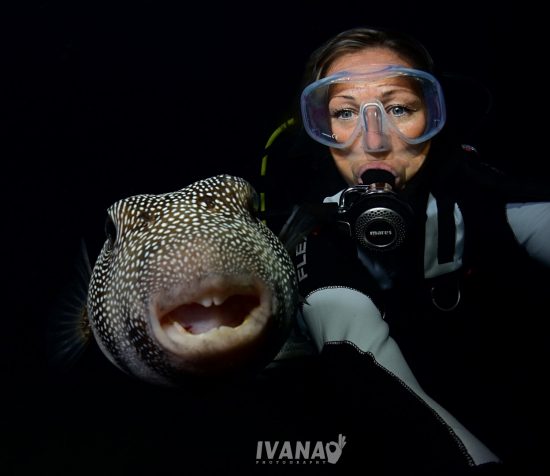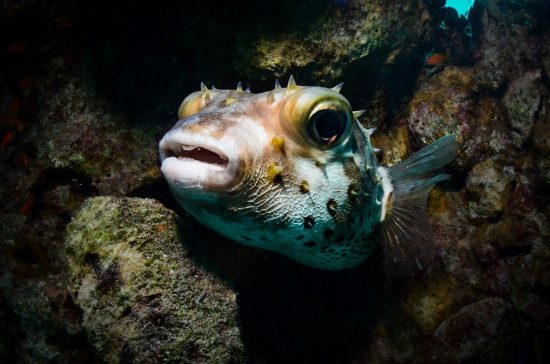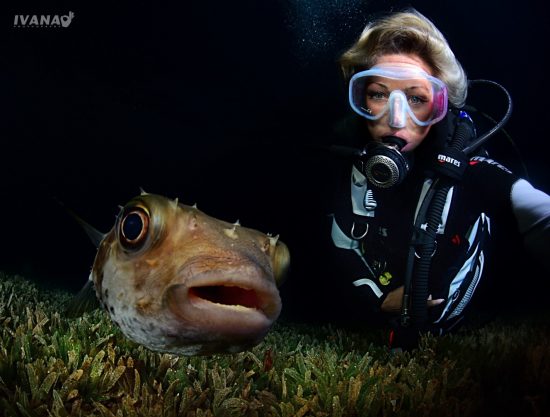




The name of a fish order - Tetraodontiformes - does not sound familiar to many, but when we look into the ten fish families listed in it, we discover that we are already quite familiar with most of the species. We all have heard of triggerfish, pufferfish, boxfish, sunfish and filefish. The ten families in this order include 430 separate species of fish. Even though they differ in shape, colour and size, they all have one thing in common, they all have teeth - four, three or two. Some of the species also have additional teeth inside their pharynx to help them with the processing of their prey. They make sounds and communicate using their teeth and also use swim bladder vibration as tools of communication. Most species don’t have scales but instead, have plates or spines which they use to protect themselves.
My personal favourite families in this order are the Pufferfish and Porcupinefish. Pufferfish cousins, Porcupinefish, are much bigger in size, with spines around their bodies. Both families inhabit warm tropical waters and feed mainly on invertebrates: coral, sponges, sea squirts and small molluscs. Pufferfish and Porcupinefish are very well known for their ability to inflate with water when feeling threatened, their unique defence mechanism to scare off predators by doubling in size. In Pufferfish the prickly spines only become visible when inflated. This behaviour - inflating with water - is supposed to work as a deterrent, but I think it just makes them look cuter. The easiest way to spot one is at night as they come out to feed when it gets dark. They are not shy, and often have a good look at the passing divers without feeling threatened and inflating.
Their flesh is known to be poisonous containing tetrodotoxin which in a neurotoxin concentrated in their organs, therefore they don’t have too many natural predators. They are considered a delicacy in the Philippines and Japan, but very few chefs are brave enough to prepare a meal from them. Chefs train for over several years to learn the art of Fugu preparation and have to obtain a special licence to serve the fish for human consumption. The toxin is so potent that a lethal dose can be measured as being as small as a pinhead. A single fish has enough toxin to kill up to 30 people. Ingestion of some of the organs will lead to death through paralysis unless prepared by a properly trained/licensed chef.
Sadly, their ability to inflate makes Porcupinefish an attractive keepsake. Sad, inflated preserved fish can often be seen all over the world in seaside resorts, sold in a preserved inflated state in souvenir shops. This makes them vulnerable to overexploitation and worries me. I much prefer to look at them underwater in their natural habitat. They are very curious, photogenic and need to be admired in their natural environment and not hanging down from the ceiling, looking very sad.
Text by Bogna Griffin (Freshwater and Marine Biologist, Ireland)
Photos by Ivana O.K. and Janez Kranjc
 Ivana and Janez
Ivana and Janez 15th August 2018
15th August 2018 GMIT, Galway, Irlanda
GMIT, Galway, Irlanda